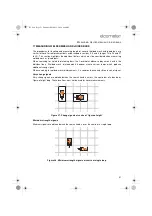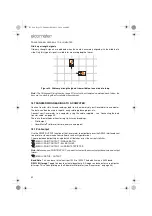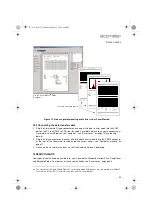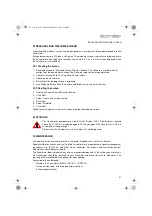
52
T
RANSFERRING
READINGS
TO
A
COMPUTER
R
Ordinary strength signals
Ordinary strength signals are obtained when the head is accurately aligned with the middle of a
side. Only this type of signal is suitable for measuring depth of cover.
Figure 29. Ordinary strength signals from middle of one side of a loop
Note:
The Orthogonal Sizing function (page 27) must not be attempted on welded mesh fabric - the
bars are too close together for reliable measurement.
18 TRANSFERRING READINGS TO A COMPUTER
You can transfer statistics and readings data from the memory of your Covermeter to a computer.
The data can then be used in reports, analysed to produce graphs, etc.
Connect your Covermeter to a computer, using the cable supplied - see “Connecting the data
transfer cable” on page 55.
There are two methods of transferring statistics and readings:
•
Print/output
•
CoverMaster
®
software (to store, analyse and report)
18.1 Print/output
Use the PRINT/OUTPUT function of the Covermeter to output data over the RS232 interface direct
to a printer or to communications software such as Hyperterminal.
Choose between outputting a single batch, all batches or just the current statistics.
MENU / PRINT/OUTPUT / SINGLE BATCH
MENU / PRINT/OUTPUT / ALL BATCHES
MENU / PRINT/OUTPUT / CURRENT STATISTICS
Note:
Before you use PRINT/OUTPUT, you must first select the correct output baud rate and output
format.
MENU / SETUP / OUTPUT
Baud Rate
. This can be set at values from 1200 to 19200. The default value is 9600 baud.
RS232 Bit Image
. Toggle tick box to activate/deactivate. All images and characters are output as
bit-maps. This allows printing on the Elcometer Miniprinter (see “Accessories” on page 64).
331.book Page 52 Thursday, March 12, 2009 9:46 PM
















































